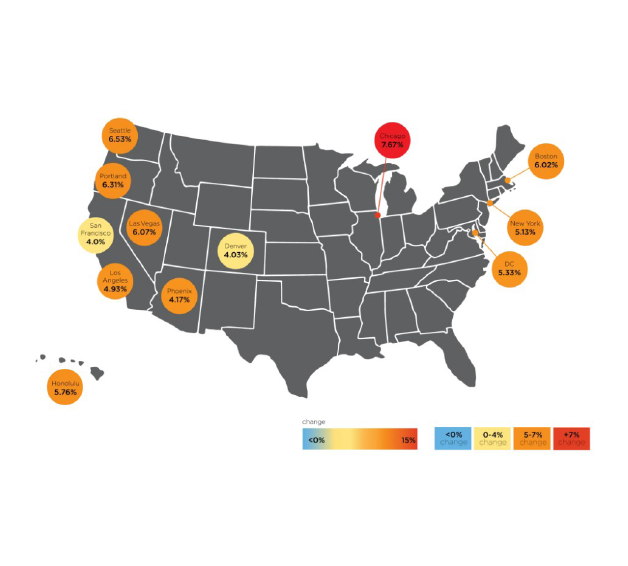By Roland Murphy for AZBEX
In its North American Quarterly Construction Cost Report for Q2, Rider Levett Bucknall shows metro Phoenix costs rose 4.17% between April 2023 and April 2024.
Phoenix was 10th out of the 12 metro areas analyzed in the report. Chicago led the nation with a year-over-year increase of 7.67%, followed by Seattle at 6.53%. San Francisco saw the lowest increase, coming in at 4.00%.
For Q2, the Phoenix area saw an increase of 0.94%. Q4 2023 had an increase of 0.83%, while Q1 2023 was last year’s highest for the local market at 1.36%.
Key national findings include:
- During Q2 2024, the U.S. national average increase in construction cost is approximately 1.12%; compared to 1.31% in the first quarter.
- Year-over-year, the U.S. national average increase in construction costs is approximately 5.41%; compared to 5.85% YoY in the first quarter.
- The construction unemployment rate is down slightly to 5.4%; down from 5.6% in the same period last year.
- The Architectural Billings Index is 42.4; a decrease of nearly six points over the previous month.
In his introduction to the report, Paul Brussow, RLB’s president of North America, warned of current headwinds while urging the industry toward caution and precision in its planning.
“For starters,” Brussow wrote, “despite the industry growing, it is doing so at a slower rate than last year (our Q2 2024 data indicates that the national average increase in construction costs is approximately 5.41% YoY, compared to 7.22% YoY in Q2 2023). In tandem, labor costs are rising faster than in previous years. Interest rates are high, but the election year promises hope for lower rates.”
“Throughout these highs and lows,” he continued, “construction companies remain focused on strategic planning, succession planning, and the acquisition and development of skilled labor. Doing so is akin to keeping our eyes on the horizon, minimizing the effects of the highs and lows, and advocating for balance and stability. The goal for everyone through this season of uncertainty should be resiliency through strategic preparedness.”

